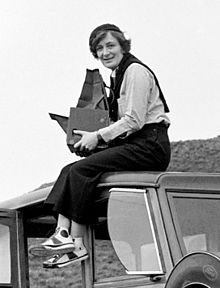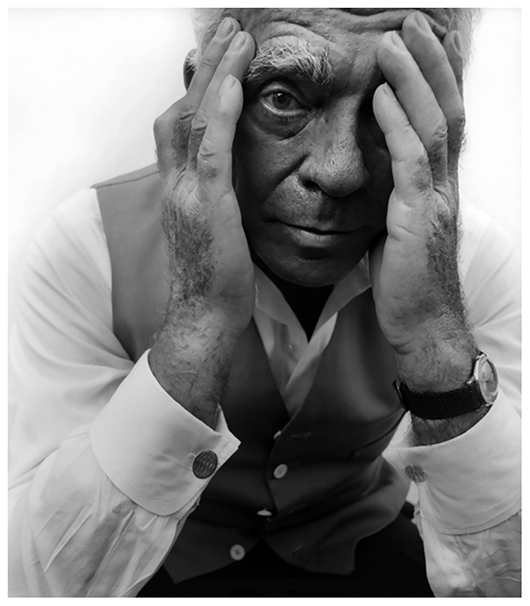Dorothea Lange (Hoboken, New Jersey, May 25, 1895-San Francisco, California, October 11, 1965) was an influential American documentary photojournalist, best known for her work the "Great Depression" for the office of Farm Security Administration. Lange's humanistic photographs of the terrible consequences of the Great Depression made her one of the most prominent journalists in world photojournalism.
Dorothea Margarette Nutzhorn was born in Hoboken, New Jersey (USA), on May 26, 1895. She dropped her middle name (Margarette) and adopted the her mother's maiden name, Lange. In 1902, at the age of 7, she suffered from poliomyelitis and as was usual at the time, children with this disease received treatment late, which made her grow up with a weak constitution and foot deformities, which did not would impede his future career.
She studied photography in New York as a student of Clarence H. White and informally participated as an apprentice in many of her photographic studios such as that of the famous Arnold Genthe. In 1918 she moved to San Francisco, where she opened a successful studio. She lived in Berkeley Bay for the rest of her life. In 1920 she married the noted painter Maynard Dixon, with whom she had two sons: Daniel, born in 1925, and John, born in 1928. </ P>
With the onset of the Great Depression, Lange took the lens of her cameras from her studio to the streets. Her studies of her unemployed and her homeless soon caught the attention of local photographers and led to her being hired by the federal administration, later called the "Farm Security Administration." >
In December 1935 she divorced Dixon and married agrarian economist Paul Schuster Taylor, a professor of economics at the University of California. Taylor trains Lange in social and economic issues, and together they make a documentary about rural poverty and the exploitation of immigrant growers and workers over the next six years. Taylor did the interviews and collected the financial information, and Lange did the photos.
Between 1935 and 1939 Lange worked for official departments, always portraying the poor and marginalized in her photos, especially peasants, displaced families and immigrants. Distributed free of charge to national newspapers, her photos became icons of the era. ...
Lange's photograph that remained as her greatest classic was Migrant Mother. The woman in the photo is Florence Owens Thompson, but Lange apparently never learned her name. In Florence's own words, and as documented by Susan Sontag herself, she neither liked being photographed nor liked that she published the images, something that she had expressly asked her not to do and that she had assured her that she would not do, as He also broke his word that he would send him a copy of the images. According to Thompson's son, Lange got some details wrong in this story, but the impact of the photograph was based on showing the strength and need of immigrant workers.
In 1941, Lange received the Guggenheim Fellowship for excellence in photography. After the attack on Pearl Harbor, she used her prestige to record the forcible evacuation of Japanese Americans (Nisei) from the concentration camps in the western part of the country. She covered all the acts of relocation of the Japanese, their temporary evacuation in assembly centers and the first permanent camps. For many observers, her photographs of Japanese American girls presenting their flag before being sent to concentration camps are a reminder of the policies of detaining people without criminal charges and without the right to defend themselves.
His images of her were so obviously critical that the Army seized them. The photographs are currently available from the Photographic Division and the Bancroft Library of the University of California.
In 1952, Lange co-founded Aperture magazine. In the last two decades of her life, her health was fragile. She suffered from gastric problems, ulcers and post-polio syndromes.
She died on October 11, 1965 of cancer at the age of 70.
(Source Wikipedia)
See some photos of Dorothea Laange








 English (United Kingdom)
English (United Kingdom)